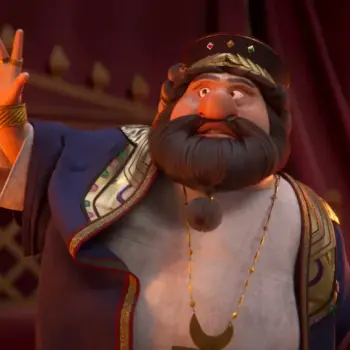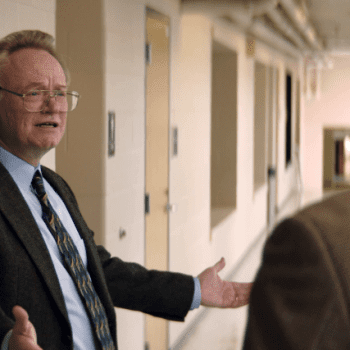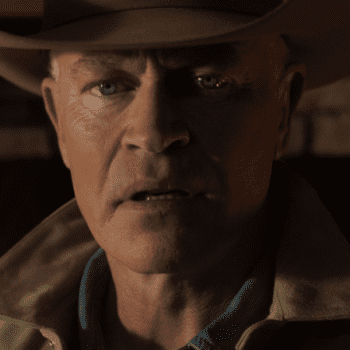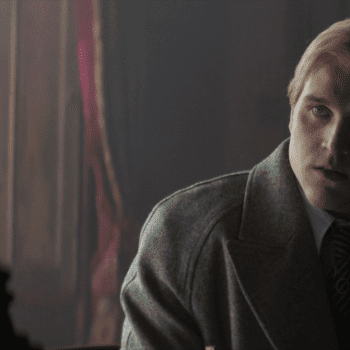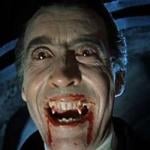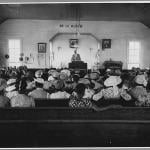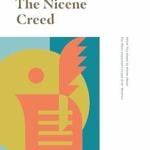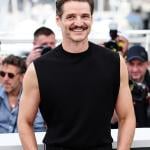 I’ve got to review Herbie: Fully Loaded when it opens next month, so I figured I might as well do some, ahem, research.
I’ve got to review Herbie: Fully Loaded when it opens next month, so I figured I might as well do some, ahem, research.
My family videotaped the first two films in the series — 1968’s The Love Bug and 1974’s Herbie Rides Again — and we watched them quite often; indeed, the latter film is the first movie I can remember seeing, at a drive-in with my parents and sister if memory serves.
Both films, produced during the hippie era, played on an idea from eastern spirituality popular at that time, to the effect that all things have an “inner life”, and in the case of this one Volkswagen Beetle, that “inner life” manifested itself as a form of sentience. But the actual effects designed to bring Herbie to life were pretty minimal, as I recall; he could move without anyone in the driver’s seat, he could spill oil on people’s feet, things like that.
I haven’t seen either film in years, but as I recall, the first was basically a relationship movie between several people and a car, with Herbie going so far as to attempt suicide when he loses the faith of his driver Jim Douglas (Dean Jones), while the second was one of those films in which a building needs to be defended from a greedy corporate tycoon keen on “development”, with a bit of screwball romance between the humans thrown in for good measure. Completely different casts, but similar sets and props.
So it was with some dismay that I greeted the trailer for the new movie starring Disney remake queen Lindsay Lohan (The Parent Trap, Freaky Friday), which pours on the CGI effects and pushes the franchise in a much more cartoony direction; I didn’t remember the earlier films being this “obvious”.
But today I saw 1977’s Herbie Goes to Monte Carlo for the first time, and I realized there may actually be a precedent for all that cartoony stuff in the original films. In this film — the first to take place outside San Francisco — the Volkswagen falls in love with a Lancia, and makes such gestures as waving his windshield wipers at her, shining and tilting his headlights at her, flapping his trunk and doors and convertible top at her, picking up flowers and leaving them on her, and so on. The Lancia replies by shyly opening her headlights in his direction, and at one point they open their doors against each other, as a way of holding hands.
Most cartoony of all, Herbie sighs and tilts his wheels outward as he watches the Lancia win a race, and when a Frenchman kisses him near the end, Herbie actually blushes (i.e., a red filter is put on a close-up shot of Herbie’s trunk, where he was kissed).
Dean Jones, who I believe had become a Christian between this and his earlier appearance in this series (he played Chuck Colson in the film version of Born Again one year later), is back as Jim Douglas, but he never makes any reference to any of the characters or situations of the previous films. This time, his sidekick is played by Don Knotts, mugging it up as usual.
And the love interest this time is a woman who keeps harping away on her need to be independent; presumably this was intended as some sort of nod to the feminist movement, but the woman in question gets pretty hysterical (“Women are supposed to be nurses and secretaries and schoolteachers!” the woman complains, as she throws dishes at Jim Douglas), and the men are still basically in charge, performing the rescues and so on.
It has been 37 years since The Love Bug, and 28 years since the film I saw today. It’s always interesting to see how a series of films reflects the socio-cultural changes of its times. I am thus, of course, a tad apprehensive about what the upcoming Lindsay Lohan film will say about us, a few decades hence.



